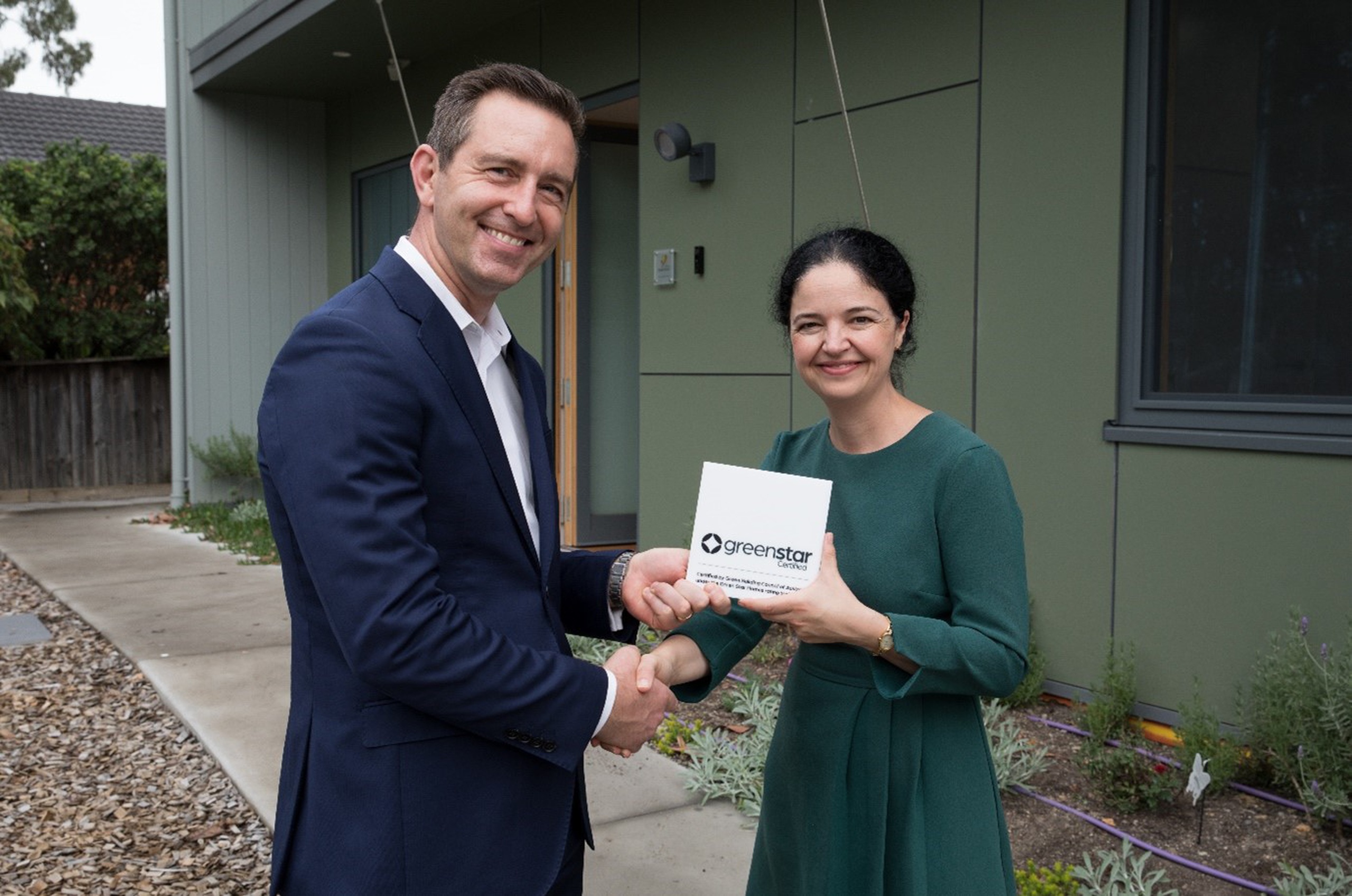Fringed by national parks within the suburban streets of Sydney’s north, Chris Nunn’s home in Asquith brings the green in, in more ways than one. It is the first certified Green Star Home in Australia and shows that comfortable, resilient, electrified homes are possible now. It is also the first home to demonstrate the benefits of combining Green Star Homes and Passive House certifications.
With his roots in environmental law, Chris has over 20 years of sustainability experience branching into property, construction, and finance and he was the Australian Passive House Association Chair from 2017 until 2021. It makes sense that where his family calls home is healthy for them and the planet.
Chris’s family lived in a house on the same block for four years prior to the build. He says it was a typical Sydney home: cold in winter and patched with black mould, hot in summer with the lingering scent of bushfire smoke, all mixed in with high heating and cooling costs, with energy bills coming in at around $3,000 per year.
“The home had no insultation in the walls or under the floorboards, single glazing and no external shading. Temperature sensors showed in summer that it was mostly between 25° - 30° inside, hitting 36° inside during the summer of 2020.
“The home was rarely in the comfortable range of 20° - 25° deg C. In winter it was mostly between 15° - 20° inside and quite often was in the 10° - 15° deg C range. The kids’ bedrooms had condensation all over the windows, mould formed on the window frames, they wore down jackets and sleeping bags in the living room in the morning in winter because it was 7° outside and 12° inside,” said Chris.

Bringing creature comforts home
The Nunn family have been in their home for a year, and they haven’t received a single energy bill. Chris says that’s because the home generates excess energy, the energy companies owe him money. The new home isn’t just energy efficient, it’s consistently comfortable and healthy too. “Gone are the days where we had to wear jumpers, tracksuit pants, woollen socks and Ugg boots in the house to be comfortable. The kids sleep in short sleeves and shorts pyjamas with only a sheet, which they usually kick off at night, and they remain perfectly comfortable,” shared Chris.
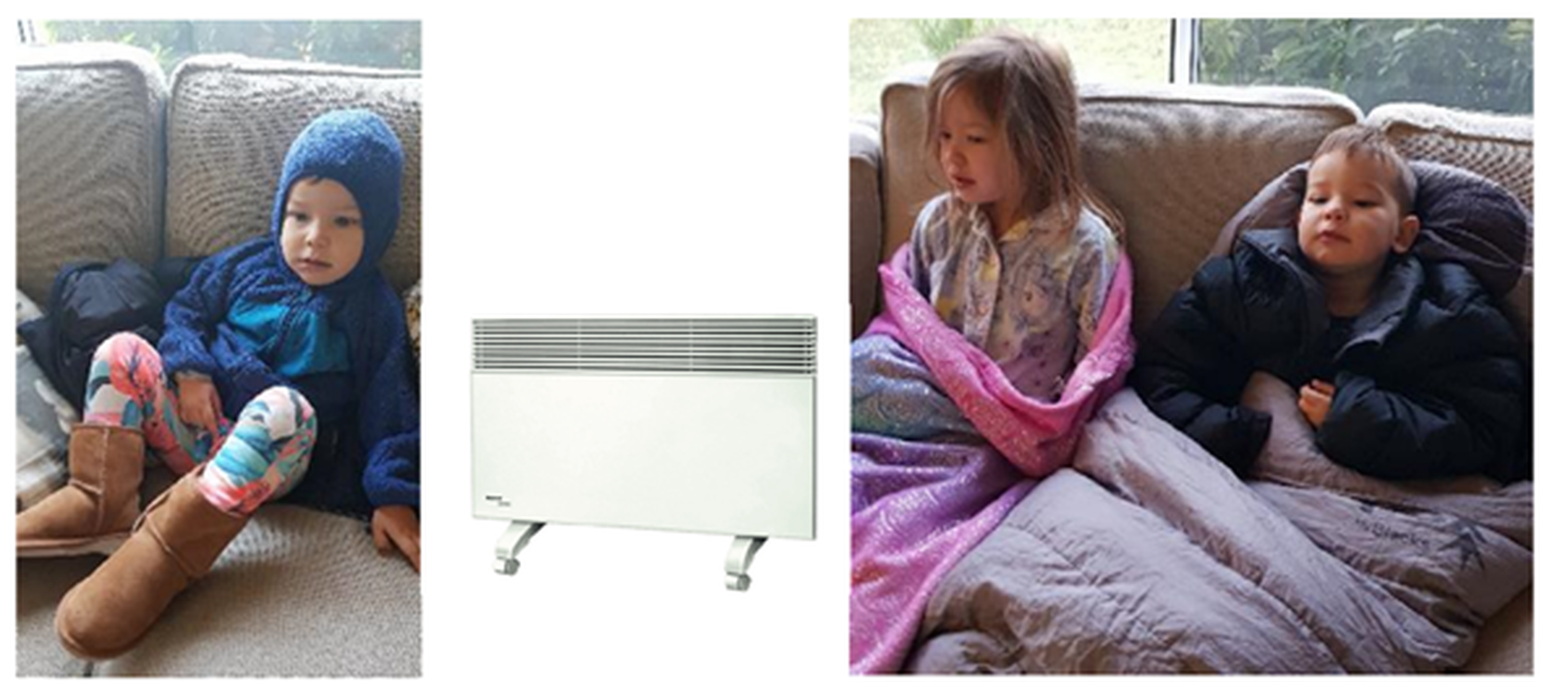
These comfort levels - which Green Building Council of Australia believes should be essential in all homes - are lacking in the homes we’ve grown used to in Australia, but thanks to existing technology and systems that are available to market now, Chris was able to achieve these comforts today.
“The key learning is that the new Green Star Homes standard and PassivHaus Certification are highly complementary. When combined, the PassivHaus Certification takes care of indoor air quality, thermal comfort and energy efficiency, then Green Star Homes adds the climate resilience, water efficiency, non-toxic materials, electrification and daylight criteria.
“We have built a comfortable healthy, efficient building. We don’t get mould or condensation, we won’t smell bushfire smoke, we will always have filtered fresh air in every room, and with the PassivHaus certification, we have 90% lower energy consumption for heating and cooling,” explained Chris.
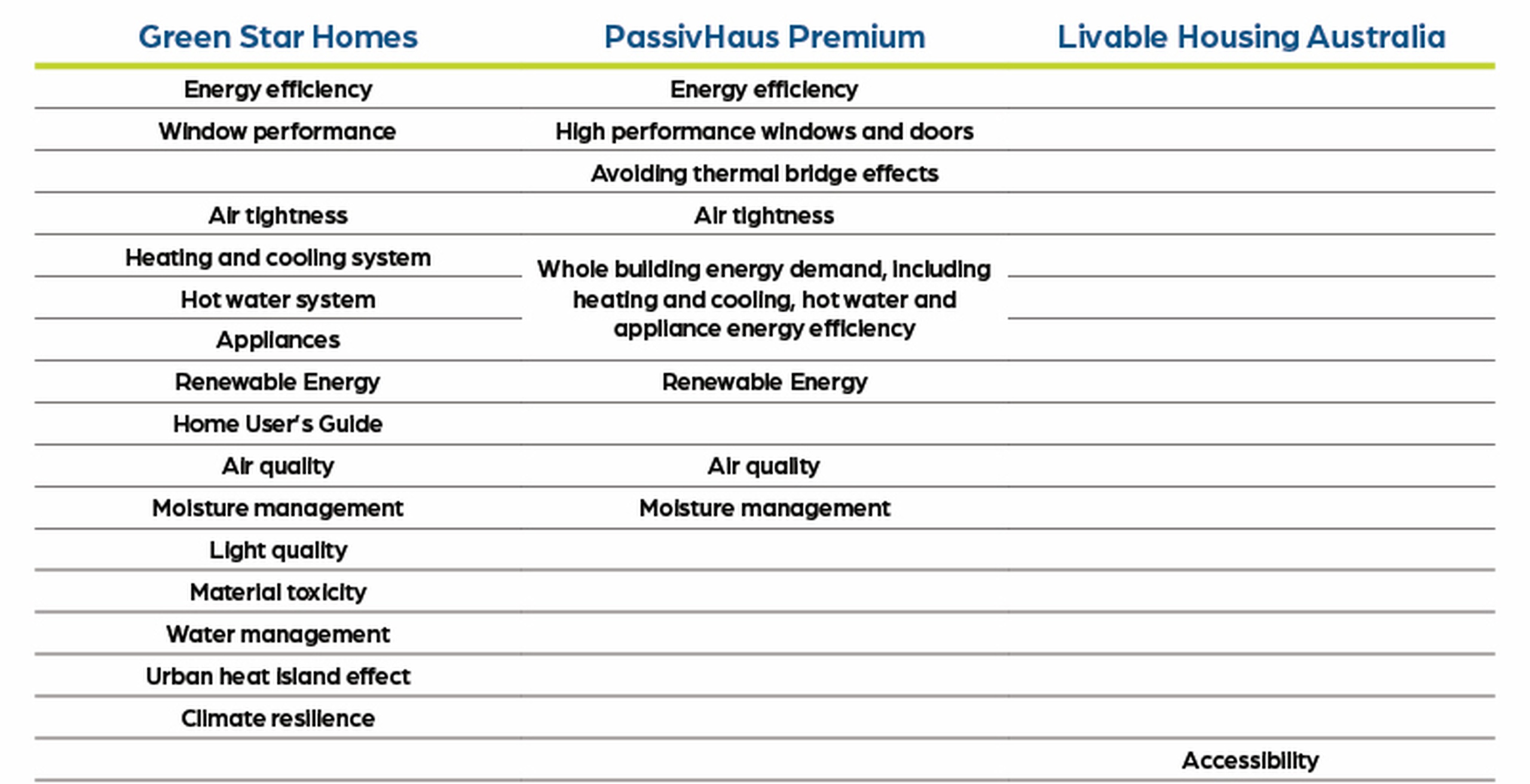
The climate is changing, our homes need to change too
Chris’s architect, Andy Marlow, a Director at Envirotecture, says that if there was one thing he could change about homes in Australia, it would be how they respond to the impacts of climate change.
“We need to build the homes that will keep people healthy and comfortable in a changing climate. We can do that by taking the skills that have for so long focused on selling a lifestyle image, to instead sell the outcomes of health and resilience that come with a sustainable home,” said Andy.
Chris agrees and that’s why his home is designed using the IPCC’s Representative Concentration Pathway 8.5 scenario, which is based on approximately 4 degrees of global warming by 2100. The home’s resiliency plan includes 21 points that cover everything from a green roof, roof shape, solar, and a solar battery.
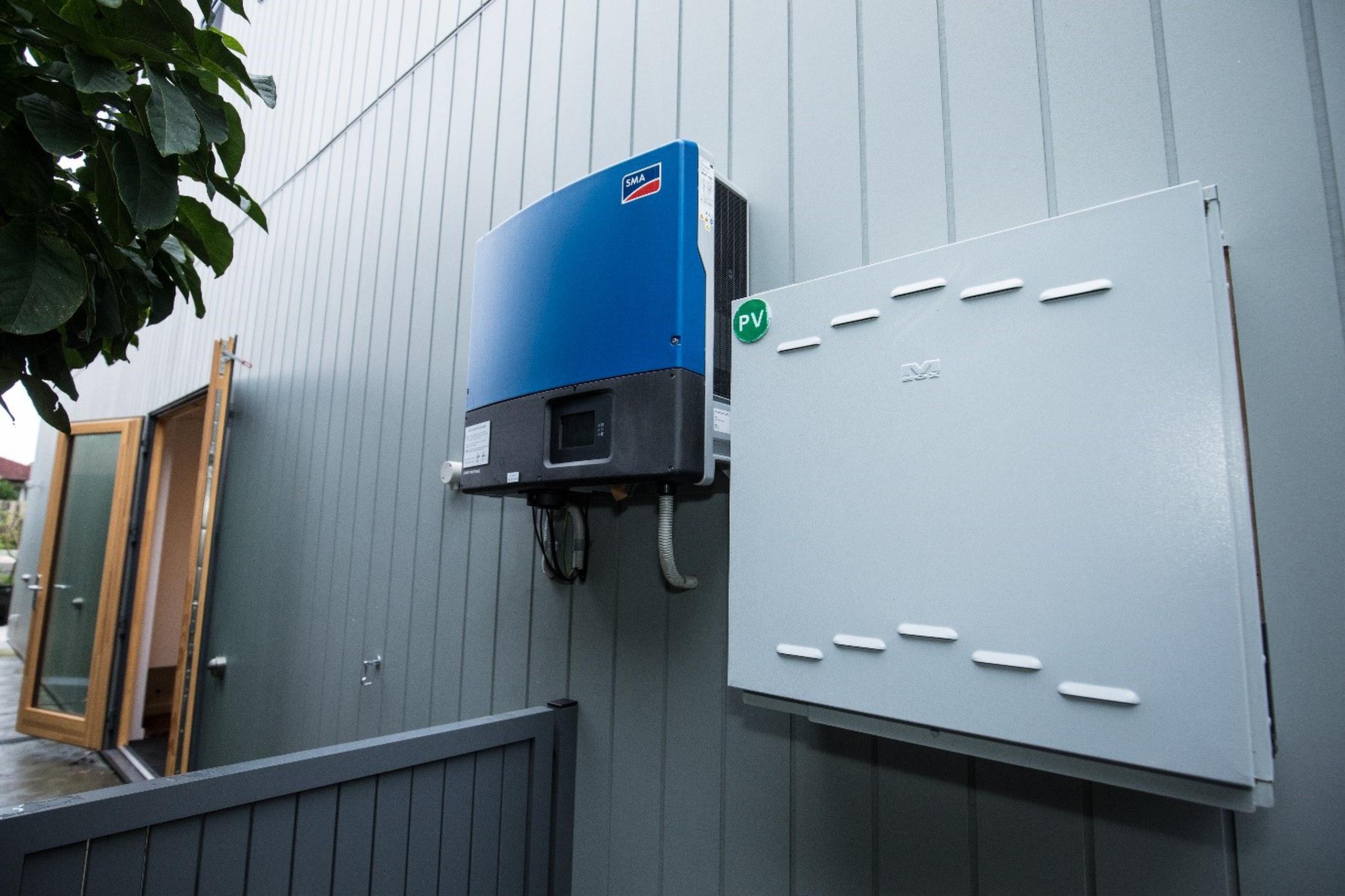
The home also covers Passive House essentials like double glazing, mechanical ventilation and heat recovery, plus fixed and automated external shading. In addition, it features façade drenchers in case of a bushfire, and landscape planting that features natives and food plants.
“The food garden is eminently practical and more beautiful by the month. It shows how we can adapt to a changing climate by embracing the physics of the planet and responding to them, rather than fighting them,” said Andy.
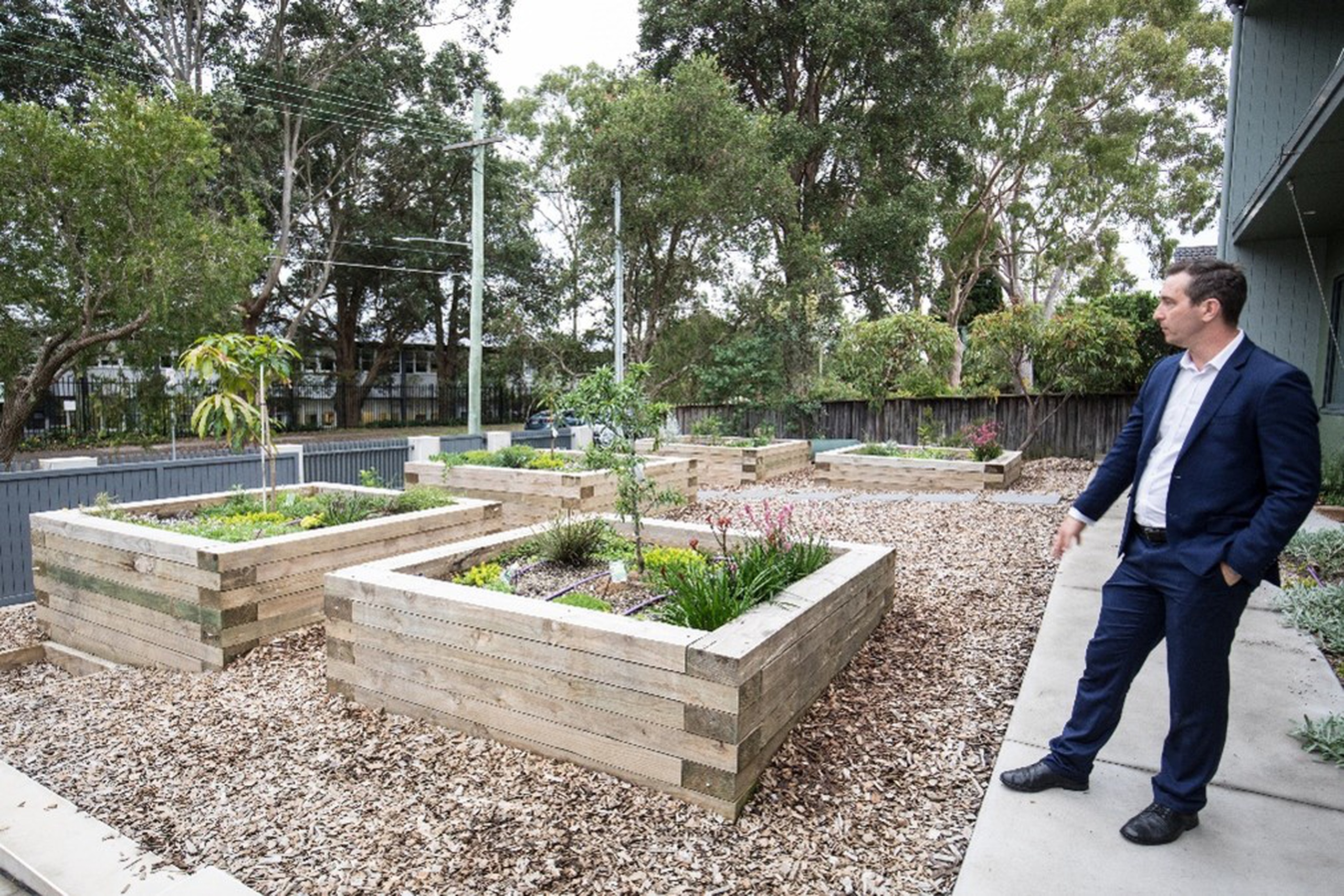
Driving change with radical collaboration
As the Australian Passive House Association Chair, Chris oversaw its partnership with GBCA including a MOU (Memorandum of Understanding) to work together on ultra-low energy buildings, cross walks with Green Star, and the association supplied technical support on Green Star Homes. Chris says that if the built environment is going to respond to climate change, collaborations like this are essential.
“It’s great GBCA and the Australian Passive House Association have agreements to work together, because we all want the same thing – sustainable buildings. Our industry needs the humility to see that there’s a better way of doing things than we have in the past.
“We need to work together to change the way we build houses in Australia, so everyone can have access to the benefits of sustainable buildings – comfort, health, low operating costs, with minimal environmental impacts,” Chris concludes.
GBCA thanks the Australian Passive House Association for their ongoing support and we look forward to continuing this partnership as we drive the uptake of more efficient and comfortable buildings in Australia, together.
Are you ready to start your Green Star Home journey? Visit our Green Star Homes information for buyers or if you’re a builder, you can learn more here.
